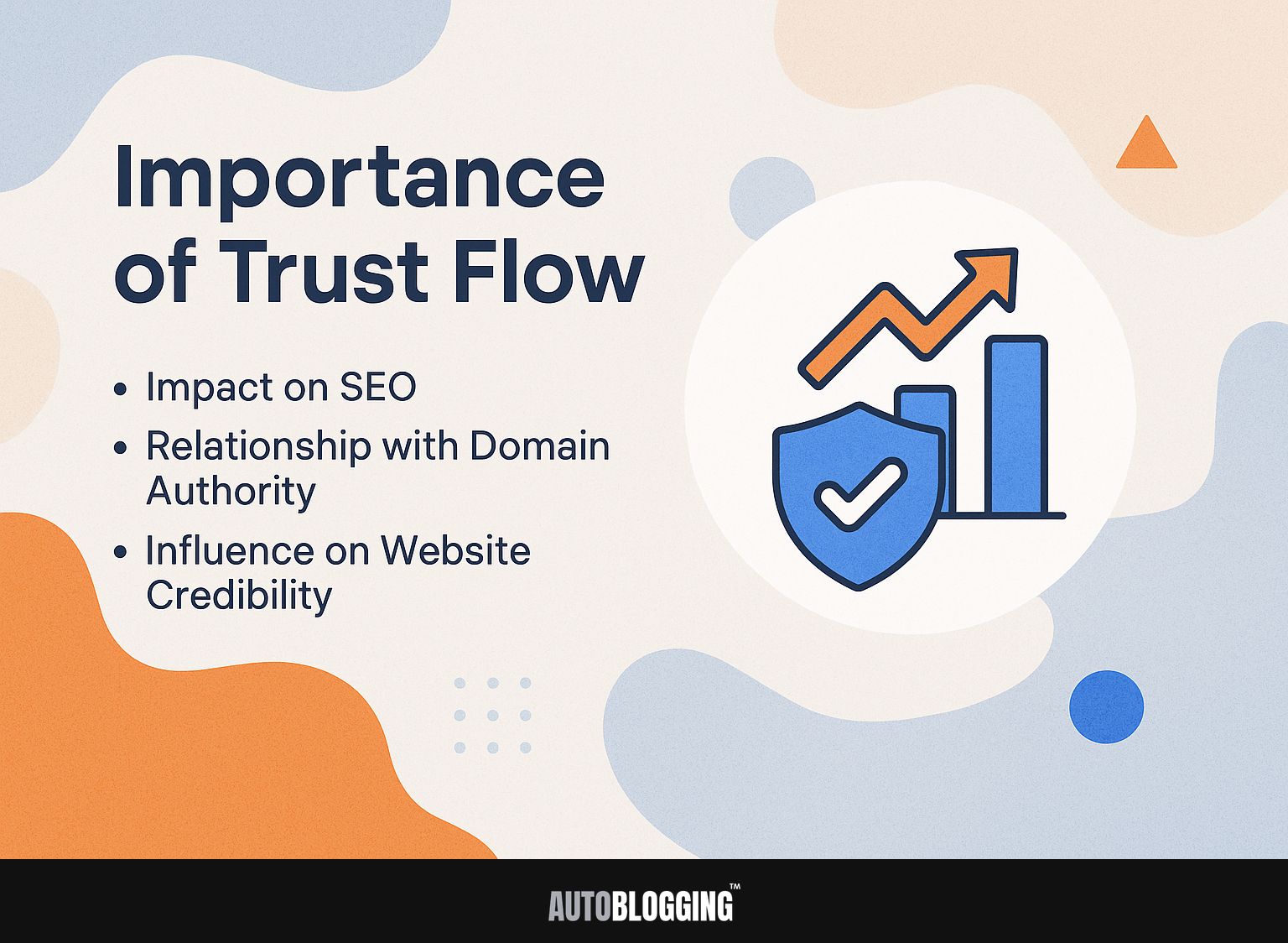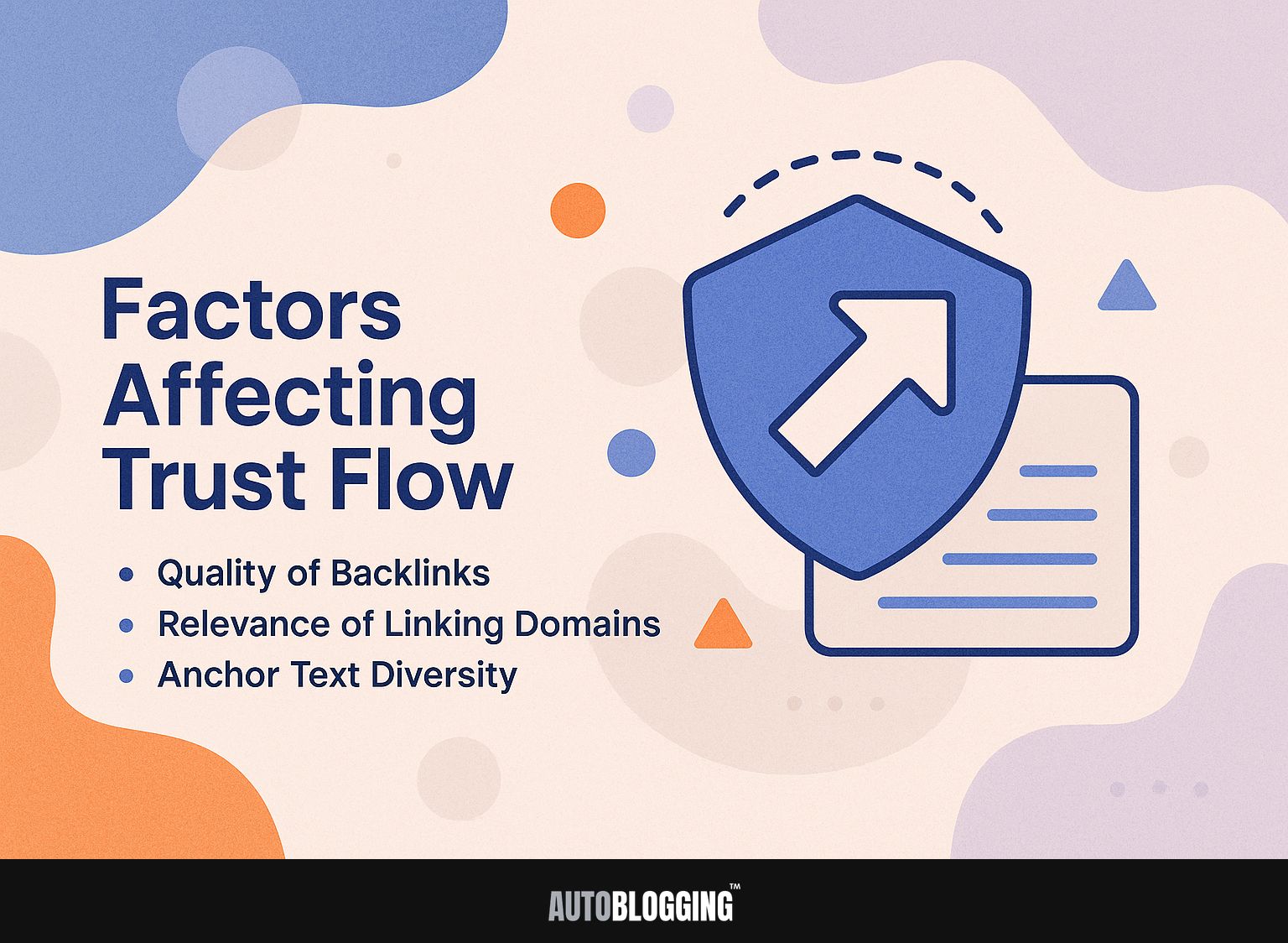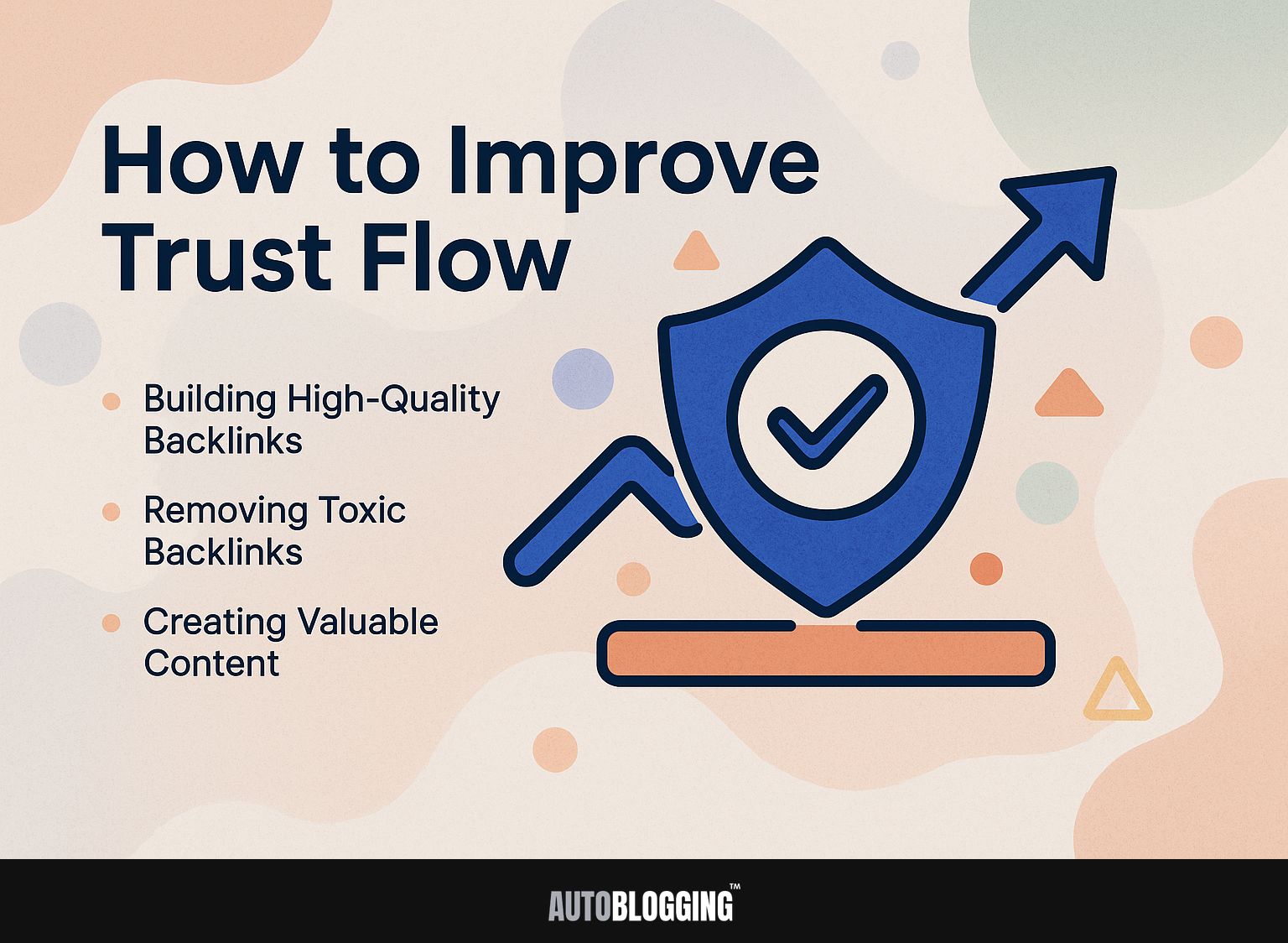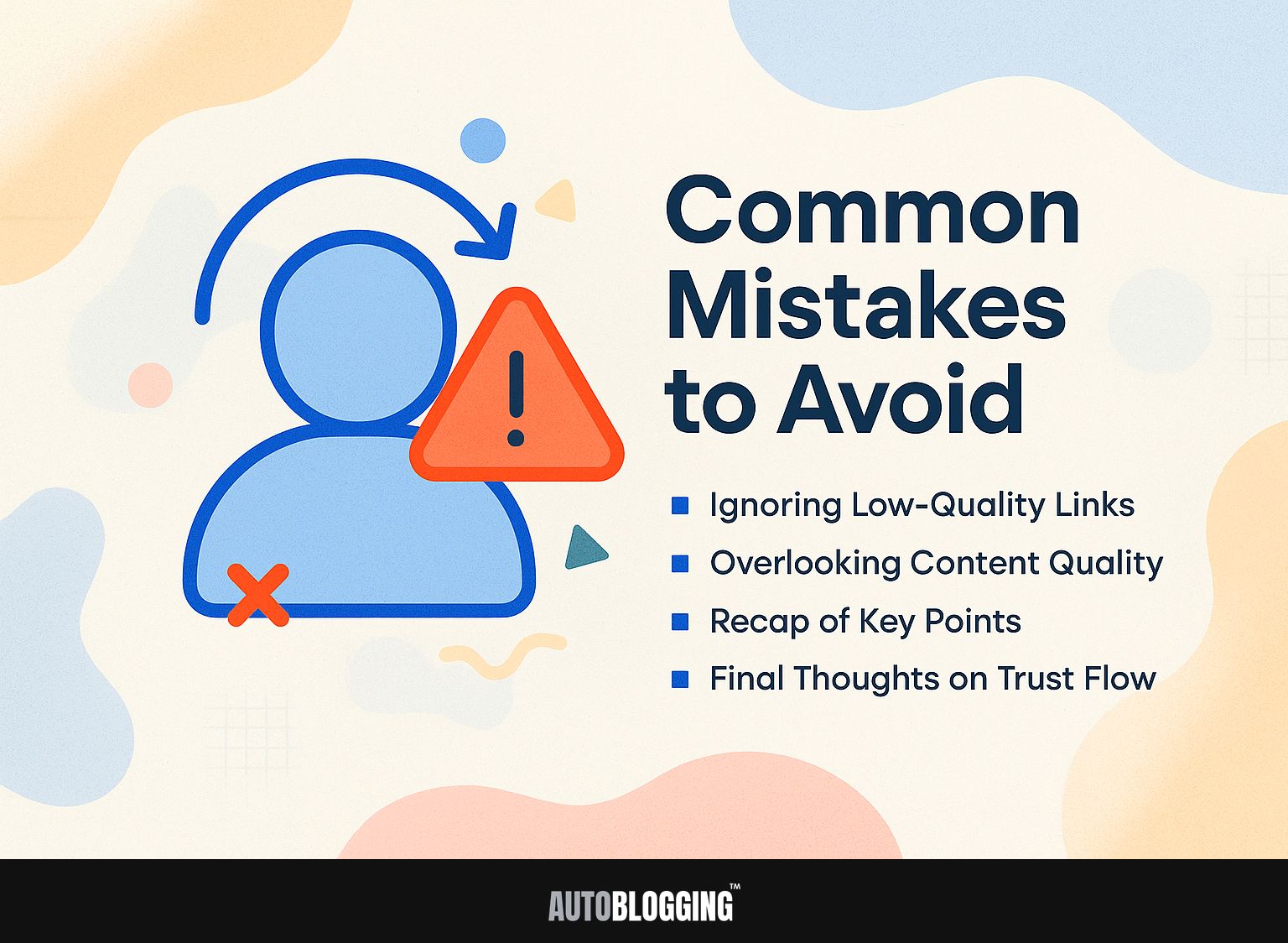Knowing Trust Flow helps improve your site’s credibility in SEO. Created by Majestic, Trust Flow checks the quality of your backlinks, offering helpful information about your site’s trustworthiness. This article will explain what Trust Flow is, why it matters for SEO, and how to effectively increase this important quality measure. Prepare to improve your link-building strategies and expand your online visibility!
Key Takeaways:
- Trust Flow is a metric that measures the quality and relevance of backlinks to a website, indicating its credibility and authority in search engine rankings.
- Improving Trust Flow can help SEO, raise domain authority, and make a website more trustworthy, making it important for online success.
- To improve Trust Flow, get high-quality backlinks, remove harmful ones, and create useful content. Regularly monitoring and utilizing tools, while avoiding common mistakes, can also help maintain a strong Trust Flow.
Contents
What is Trust Flow?
Trust Flow evaluates the quality of links leading to a website, giving an idea of how trustworthy and authoritative it is considered. If interested, you might explore how AI and user insights are influencing modern SEO strategies in our article on Revolutionizing SEO: How AI and User Insights are Shaping Tomorrow’s Digital Landscape.
1. Definition of Trust Flow
Trust Flow, developed by Majestic, assesses the trustworthiness of a website based on its backlink profile, graded on a scale from 0 to 100. A high Trust Flow score, such as 70 or above, signifies strong credibility and quality backlinks.
For example, established sites like Wikipedia and major news outlets often boast Trust Flow scores over 70. These scores suggest that a website is endorsed by many other reputable websites, enhancing its overall authority.
To improve your own Trust Flow, focus on earning backlinks from trustworthy sources, such as industry-related publications or notable blogs, and regularly audit your backlink profile using tools like Majestic or Ahrefs.
2. How Trust Flow is Measured
Trust Flow is calculated by analyzing the quality and quantity of backlinks, with emphasis on the trustworthiness of those sources.
To check Trust Flow, you can use tools like Majestic, which gives detailed information on the quality of linking websites.
For instance, a website with 100 backlinks could achieve a Trust Flow score of 60 if those links come from high-authority sites. Factors to consider include the relevance of the referring domains and their overall Trust Flow scores.
Regularly reviewing these metrics helps you identify strong backlink opportunities and assess the impact of your link-building efforts on your site’s credibility.
Importance of Trust Flow
Trust Flow is important for search engine optimization (SEO) because it affects how well a website can rank on search engines. An understanding of Trust Flow can be deepened by exploring its connection to PageRank, which assesses the quality and quantity of links to a webpage. Worth exploring: What is PageRank: Definition, Importance, and How It Works to see how these concepts interplay.
1. Impact on SEO
A high Trust Flow score correlates with improved search engine rankings, as it reflects a site’s credibility and quality of backlinks.
For instance, a recent case study observed a small e-commerce site that increased its Trust Flow from 15 to 30 through a focused backlink strategy. This involved earning quality links from reputable industry blogs and local news sites.
As a result, the site experienced a 40% rise in organic traffic within three months. To increase Trust Flow, frequently check your backlink profile with tools such as Moz or Ahrefs, and participate in guest posting or collaborations that increase your site’s authority.
2. Relationship with Domain Authority
Trust Flow and Domain Authority are interconnected metrics that collectively assess a website’s credibility, enhancing competitive analysis in SEO.
For instance, two websites may both have a Domain Authority (DA) of 30, indicating they rank similarly in terms of backlink strength.
If one site has a Trust Flow (TF) of 20 and the other has a TF of 5, the former is deemed more trustworthy due to its stronger relationship with quality links.
Tools like Majestic give scores that help digital marketers improve their strategies by evaluating how trustworthy each site is. This helps make better choices in link building and partnerships.
3. Influence on Website Credibility
Higher Trust Flow scores make websites seem more reliable, bringing more visitors and increasing user confidence and interaction.
Websites with a Trust Flow above 30 see a 25% increase in user trust based on surveys. To improve your Trust Flow, concentrate on getting backlinks from reputable and well-regarded sites.
Tools such as Majestic or Ahrefs can find good link possibilities. One actionable method is to engage in guest blogging-target blogs within your niche that boast a high Trust Flow.
Create content that others want to share by offering special information or facts, which increases the likelihood of others linking to it. Check your Trust Flow often to track progress and adjust your plan.
Factors Affecting Trust Flow
The Trust Flow score is mainly affected by how good and relevant the website’s backlinks are.
1. Quality of Backlinks
Backlinks from reputable sites can greatly improve Trust Flow scores, while links from poor-quality sites can lower them.
To increase your Trust Flow, try to get backlinks from respected sources like.edu or.gov websites. One effective method is guest blogging; reach out to relevant blogs in your niche and offer a high-quality article in exchange for a link.
Tools like Ahrefs or Moz can help you analyze competitors’ backlinks, identifying opportunities for your site.
Keep in mind that a single high-quality backlink is often more beneficial than many low-quality ones. Focus on quality instead of quantity when planning your backlink approach.
2. Relevance of Linking Domains
The importance of the sites connected to yours can improve or lower your Trust Flow score, affecting your total SEO results.
For example, a health and wellness blog that received backlinks from established sites like WebMD and Mayo Clinic saw a Trust Flow increase from 12 to 28 within three months. This change was due to the high relevance and authority of the linking domains.
To increase your Trust Flow, obtain backlinks from websites in your field, use tools like Moz or Ahrefs to check domain authority, and send custom emails to build connections.
Building genuine relationships with other bloggers can also yield beneficial backlinks.
3. Anchor Text Diversity
Diverse anchor text in backlinks supports a healthy Trust Flow, indicating to search engines a natural link-building strategy.
Using varied anchor texts improves your site’s credibility and helps it achieve a higher ranking. For instance, anchor texts like ‘best SEO tools’ and ‘top digital marketing strategies’ provide context and relevance, signaling the content’s value.
In contrast, generic phrases like ‘click here’ do little for SEO. Tools like Ahrefs or SEMrush can analyze your backlink profile, ensuring you maintain a balanced mix of branded, exact match, and generic anchor texts, which should be monitored regularly for optimal Trust Flow improvement.
How to Improve Trust Flow
Increasing Trust Flow means using specific methods to build strong backlinks, get rid of harmful links, and create good content. To effectively manage your internal linking strategy as part of this process, consider our definitional guide on internal links which covers their definition, benefits, and best practices.
1. Building High-Quality Backlinks
Building strong backlinks can greatly improve your Trust Flow. You can achieve this by writing guest articles, reaching out to influencers, and partnering on content.
To implement these strategies effectively, start by identifying relevant blogs or influencers in your niche using tools like Ahrefs or SEMrush.
For guest posting, create a targeted outreach email template that highlights the mutual benefits. When collaborating with influencers, propose co-created content that appeals to both your audiences. For instance, a tech brand might partner with a tech influencer for a product review.
By addressing their values and showcasing analytics, your chances of securing quality backlinks improve greatly.
2. Removing Toxic Backlinks
Bad backlinks can significantly reduce your Trust Flow. It is important to often review and eliminate them using tools like Google Search Console and the Disavow Tool.
- Start by accessing Google Search Console to identify harmful backlinks. Go to the ‘Links’ section to see the websites that connect to your site.
- Create a checklist for your backlink audit: include criteria such as low domain authority, spammy content, and irrelevant niches.
- After you find them, contact the website owners to have them taken down. If they don’t comply, use the Disavow Tool to submit the toxic links.
A real example is the site “example.com,” which improved its Trust Flow by 20% after cleaning its profile of spammy backlinks.
3. Creating Valuable Content
Making content that people find useful and want to share is important for getting natural backlinks. This helps build credibility and improves SEO performance.
To create such content, consider thorough research studies, appealing infographics, or detailed how-to guides.
For instance, a well-researched study on industry trends can establish authority and encourage backlinks from other websites. Tools like Canva can help in creating appealing infographics, while platforms like BuzzSumo can inspire ideas based on trending topics.
Track your success through metrics like Trust Flow, which often increases significantly after implementing a content strategy-some users report improvements of 20% or more within months.
Tools for Measuring Trust Flow
Using reliable tools to measure Trust Flow can give helpful information about a site’s backlink profile and overall SEO condition. (For additional context, our guide on internal links discusses how they contribute to a robust SEO strategy.)
1. Majestic SEO Overview
Majestic SEO is a leading tool for assessing Trust Flow, offering extensive backlink data and detailed analysis for digital marketers. Majestic offers a range of tools for SEO strategies, starting at $49 monthly.
The Trust Flow metric evaluates link quality, helping users gauge the reliability of backlinks. Majestic’s Site Explorer allows you to look at a domain’s backlink information, showing the websites that connect to it, the anchor texts used, and the topics involved.
Users can use the ‘Comparative Analysis’ tool to compare their area with their competitors, showing areas that need improvement. A screenshot of the dashboard displays these features, helping you grasp how backlinks are performing.
2. Other Trust Flow Tools
Tools like Ahrefs and SEMrush are useful alongside Majestic for checking Trust Flow, each offering unique functions for SEO analysis.
Ahrefs, starting at $99/month, is great for analyzing backlinks and gives information about domain strength and the possibility for organic traffic.
SEMrush, costing $119.95 per month, is very good at analyzing competitors and provides detailed keyword tracking.
Ahrefs is popular because it’s easy to use and provides a lot of data. However, SEMrush is useful for businesses because it helps them analyze their competitors thoroughly.
Each tool can make your SEO plan better, whether you concentrate on backlink numbers or analyzing your competitors.
Common Mistakes to Avoid
It’s important to steer clear of usual mistakes to keep a solid Trust Flow score and have successful link-building methods.
1. Ignoring Low-Quality Links
Failing to identify and disavow low-quality backlinks can dramatically lower your Trust Flow and lead to penalties from search engines.
To mitigate these risks, follow this step-by-step guide for using the Disavow Tool effectively.
- Start by doing a detailed check of your backlinks with tools like Ahrefs or SEMrush to find any bad links.
- Next, compile these URLs into a.txt file.
- After you are ready, go to Google’s Disavow Tool and choose your website.
- Upload the.txt file, and submit your request.
Regularly monitor your backlink profile to stay proactive; a quarterly review is recommended to catch any new low-quality links before they can affect your site’s performance.
2. Overlooking Content Quality
Neglecting the quality of your content can undermine your Trust Flow, as poor content deters backlinks and user engagement.
To create excellent content, follow this checklist:
- Thorough Research – Base your content on well-researched information, citing credible sources.
- Engaging Headline – Use simple and clear titles that match the content.
- Clear Structure – Organize your content with headings, subheadings, and bullet points for better readability.
- SEO Optimization – Use important keywords thoughtfully while keeping the text smooth and natural.
Improved content quality typically results in higher Trust Flow, with metrics showing that sites implementing these strategies saw an average increase of 30% in user engagement over six months.
3. Recap of Key Points
Trust Flow is an important measure for checking the quality of your backlinks and your SEO plan. A high Trust Flow score shows that your backlinks come from reliable and respected sites, which is important for better search rankings.
To improve this score, concentrate on getting links from reputable websites within your field. Tools like Majestic allow you to monitor your Trust Flow, helping you identify link opportunities.
Think about ways to expand your reach by writing articles on other websites or working with popular online personalities to create important backlinks. Regularly analyze your profile to remove any toxic links, which can negatively impact your score.
4. Final Thoughts on Trust Flow
Improving your Trust Flow requires ongoing effort in backlink management, content creation, and maintaining digital credibility.
To improve your Trust Flow, aim for getting high-quality backlinks from well-known sites in your field. Use tools like Ahrefs or Moz to analyze potential sources and identify opportunities. Simultaneously, produce reliable content that meets the needs of your audience; think about writing detailed guides or reports about your industry.
Regularly engage with your audience on social platforms and forums to build a credible online presence. This method improves your Trust Flow and builds a strong foundation for SEO growth as search engine algorithms evolve.
Further Reading and Resources
People interested in learning more about Trust Flow and its effects on SEO can find many resources and tools.
Check out these selected resources to help you learn more:
- ‘SEO 2023’ by Adam Clarke gives essential information on Trust Flow and methods for building links.
- The article ‘The Importance of Trust Flow in SEO’ on Moz’s blog offers detailed analysis with practical examples.
- For tools, try using Majestic to check Trust Flow metrics and SEMrush for detailed SEO audits.
Engaging with these materials will equip you with actionable knowledge to improve your website’s SEO performance effectively.
Frequently Asked Questions
1. What is Trust Flow?
Trust Flow is a metric used in SEO that measures the quality and trustworthiness of a website based on the number of quality backlinks it has.
2. How is Trust Flow defined?
Trust Flow is defined as a score between 0-100, with 100 being the highest, that determines how trustworthy a website is based on its backlink profile.
3. What is the importance of Trust Flow?
Trust Flow is important because it can greatly impact a website’s search engine rankings. Websites with a high Trust Flow are seen as more authoritative and trustworthy by search engines, resulting in higher rankings.
4. How can I improve my Trust Flow?
To improve your Trust Flow, you can focus on building high-quality backlinks from authoritative and trustworthy websites. You can do this by making helpful content, writing guest posts, and connecting with other websites in your field.
5. Why is it important to monitor your Trust Flow?
Monitoring your Trust Flow is important because it can indicate any changes in the quality and trustworthiness of your website. If your Trust Flow decreases, it may be a sign that your website’s backlink profile needs improvement.
6. Can Trust Flow be manipulated?
No, Trust Flow cannot be directly manipulated. It is a measure of natural backlinks, so any efforts to manipulate it may result in penalties from search engines.









